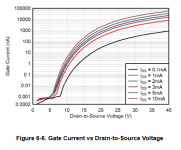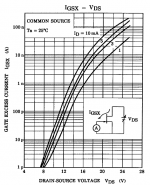Greetings,
There is an open-source FetHead-like design: https://oshwlab.com/zipdox/fethead
Would it be feasible or beneficial to use TI JFE150 in place of 2SK-209?
I would appreciate an advice as to how this can be achieved (and should it be attempted in the first place).
Thanks.
There is an open-source FetHead-like design: https://oshwlab.com/zipdox/fethead
Would it be feasible or beneficial to use TI JFE150 in place of 2SK-209?
I would appreciate an advice as to how this can be achieved (and should it be attempted in the first place).
Thanks.
Passive Fet?
In-line that feeds off 48v phantom.
Last edited:
The JFE150 is only rated at 40V, will not survive the 48V turnon / plugin, a 24V phantom system will do, but is not standard.
The JFE150 is only rated at 40V, will not survive the 48V turnon / plugin
That's a very good point. Thank you.
Aha, right. so 'Passive', I havent heard that terminology used before. Strange, as it obviously operates off power, just doesn't need an additional source of power.
As for the fet. if you have the 209 already, I would just stick with that. as mentioned the JFE150 breakdown voltage is too low to use with 48V phantom power.
As for the fet. if you have the 209 already, I would just stick with that. as mentioned the JFE150 breakdown voltage is too low to use with 48V phantom power.
The 48V comes from 3,400 Ohms. If the FET is pulling current, it will never get to 48V. More often the FET sucks 5mA, so 17 V drop, or 30V across the FET.is only rated at 40V, will not survive the 48V turnon
Anyway, essentially no standard J-FETs are rated over 40V (often 35V).
Anyway the "maximum" on a standard J-FET is when the Gate Current spec is violated, lessening the usual advantage of a J-FET. But in this Lifter application the source is low-Z and won't mind a little current.
According to Wikipedia and other websites, the series resistor for each phase of 48V phantom power is 6.81k :
https://de.wikipedia.org/wiki/Phantomspeisung
https://www.sweetwater.com/sweetcare/articles/what-phantom-power-need/
The following JFETs are rated at 50V and standard items at Mouser, DK, etc, :
https://toshiba.semicon-storage.com/info/docget.jsp?did=19662&prodName=2SK209
https://toshiba.semicon-storage.com/info/docget.jsp?did=19660&prodName=2SK208
https://toshiba.semicon-storage.com/info/docget.jsp?did=19704&prodName=2SK2145
The first link in post #1 chooses to use 2x 2SK209GR in parallel per phase.
2SK209GR has a Idss of 2.6~6.5mA. 2x in parallel means 5.2~13mA
Even at 6.5mA, voltage drop across the 6.81k resistor is ~44V, leaving only 4V for the JFET.
Which is why the 56R resistor is necessary to reduce bias current by generating a negative Vgs.
But this also generates additional 3rd harmonics, while reducing 2nd.
IMHO there is no need to use 2x in parallel, which requires a matched quad.
Also, on average, the 2SK209's are at around 3~4mA, meaning a drop of ~24V, exactly at mid-voltage as one would want.
Just simple matching would allow one to pick the devices with optimum Idss.
If the devices are well matched (for Idss and Yfs), the 2nd harmonics will cancel out.
And the remaining 3rd harmonics are very low.
https://www.diyaudio.com/community/threads/njfets-for-source-follower-applications.329131/
One can also use a single 2SK2145GR instead.
About 50% are quite well matched, but there are also real bad ones.
So matching still required.
https://www.diyaudio.com/community/threads/2sk2145-matching-statistics.371427/
Attached is a spice file that you can play with various variants.
Cheers,
Patrick
https://de.wikipedia.org/wiki/Phantomspeisung
https://www.sweetwater.com/sweetcare/articles/what-phantom-power-need/
The following JFETs are rated at 50V and standard items at Mouser, DK, etc, :
https://toshiba.semicon-storage.com/info/docget.jsp?did=19662&prodName=2SK209
https://toshiba.semicon-storage.com/info/docget.jsp?did=19660&prodName=2SK208
https://toshiba.semicon-storage.com/info/docget.jsp?did=19704&prodName=2SK2145
The first link in post #1 chooses to use 2x 2SK209GR in parallel per phase.
2SK209GR has a Idss of 2.6~6.5mA. 2x in parallel means 5.2~13mA
Even at 6.5mA, voltage drop across the 6.81k resistor is ~44V, leaving only 4V for the JFET.
Which is why the 56R resistor is necessary to reduce bias current by generating a negative Vgs.
But this also generates additional 3rd harmonics, while reducing 2nd.
IMHO there is no need to use 2x in parallel, which requires a matched quad.
Also, on average, the 2SK209's are at around 3~4mA, meaning a drop of ~24V, exactly at mid-voltage as one would want.
Just simple matching would allow one to pick the devices with optimum Idss.
If the devices are well matched (for Idss and Yfs), the 2nd harmonics will cancel out.
And the remaining 3rd harmonics are very low.
https://www.diyaudio.com/community/threads/njfets-for-source-follower-applications.329131/
One can also use a single 2SK2145GR instead.
About 50% are quite well matched, but there are also real bad ones.
So matching still required.
https://www.diyaudio.com/community/threads/2sk2145-matching-statistics.371427/
Attached is a spice file that you can play with various variants.
Cheers,
Patrick
Attachments
Then going back to the question in post #1 :
The possible argument for using TI JFE 150 (single) or JFE2140 (matched dual) is possibly lower noise and higher transconductance.
But both TI JFETs have very high Idss (35mA and 18mA respectively).
To reduce this to 3.5mA means a large source degenration resistor, which reduces effective gain significantly.
And 2SK209 is already very low in noise, in the order of 1.3nV/sqrtHz :
https://www.electronicdesign.com/po...lowvoltage-njfets-under-consistent-conditions
For me no real argument to spend 7x the money for little or no advantage.
Patrick
The possible argument for using TI JFE 150 (single) or JFE2140 (matched dual) is possibly lower noise and higher transconductance.
But both TI JFETs have very high Idss (35mA and 18mA respectively).
To reduce this to 3.5mA means a large source degenration resistor, which reduces effective gain significantly.
And 2SK209 is already very low in noise, in the order of 1.3nV/sqrtHz :
https://www.electronicdesign.com/po...lowvoltage-njfets-under-consistent-conditions
For me no real argument to spend 7x the money for little or no advantage.
Patrick
the max fet voltage is especially important when hot plugging the device into the phantom powered line. The large for noise input coupling capacitors of the preamp are charged at 48V. some diodes are limiting the negative swing of the amp input upon plug in, so the peak current will be delivered by the input coupling caps.
Last but not least, gate current can be as high as 10µA at 25V Vds (using JFE2140 as an example).
But this reduces to 10nA at Vds = 12V.
One can reduce Vds to say 12V by simply using a higher bias (~5mA).
Or add a 3k resistor to the drain, with next to no impact on distortion.
Toshiba JFETs also have much lower gate current, according to published data.
Patrick
But this reduces to 10nA at Vds = 12V.
One can reduce Vds to say 12V by simply using a higher bias (~5mA).
Or add a 3k resistor to the drain, with next to no impact on distortion.
Toshiba JFETs also have much lower gate current, according to published data.
Patrick
Attachments
Small consolation, but the JFE150 and JFE2140 have protection diodes built in (at only 6X $ now)For me no real argument to spend 7x the money for little or no advantage.
Patrick
- Home
- Source & Line
- Analog Line Level
- Passive FET on TI JFE150
 moved to analog line level forum.
moved to analog line level forum.
